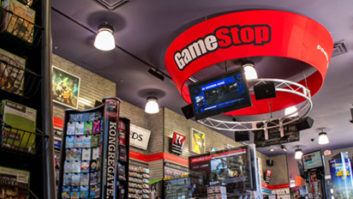New York – Marketers and analysts expect modest growth
in U.S.
cellular sell-in this year, but the statistics belie the pace of change within
the industry.
In 2009, the industry witnessed an
unprecedented influx of new smartphones, the proliferation of smartphone OSs,
the launch of 4G service, major gains in prepaid market share, and
a growing assertiveness by the retail channel to take back market share.
What’s next? TWICE asked key executives for their take on the
coming year. The executives are Joe Cufari, VP, Advanced Devices Division
at Personal Communications Devices; J. Mark Howell, president of Brightpoint
Americas; Jason Mackenzie, VP of sales
and marketing at HTC America; and Mark
Louison, president of Nokia North America. Here’s what they said:
2009-2010 SALES, PRODUCT OUTLOOK
TWICE:
What are your
estimates for U.S.
handset sell-in in 2009 and 2010, and what will drive growth?
Howell:
In 2009, we estimate handset sell-in reached 165
million units in North
America, down approximately 7 percent versus
2008. We anticipate growth to return in 2010 with an estimated volume of 171
million units. The overall macroeconomic downturn drove much of the slide in
2009, as replacement cycles lengthened, and manufacturers did not launch as
many handsets as in previous years. 2010 growth appears to be driven as much by
the relative recovery of the economy as it is the introduction of any one
handset or category of handsets. Our statistical source is the CIR Global Handset Model.
Mackenzie:
While HTC
does not speak to the specific numbers region by region, we can say that HTC America has seen tremendous growth over the
past year. We have launched more devices in the U.S. in 2009 than any prior year
and continue to see increases in demand. We believe these increases represent
further proof that consumers are looking for a unique customizable experience
that fits them from their mobile device.
TWICE:
How did the mix of products sold in 2009
change, and what changes might we see in 2010?
Howell:
While data is not conclusive around all of these
categories, there were a few important trends. First, smartphone market share
continued to increase as a share of total devices sold. With the introduction
of the Apple 3Gs, new RIM devices, new HTC
product, and recently introduced Android devices, this is likely to continue
into 2010. In addition, due to high subsidies on smartphones, the devices are
more accessible to a larger market, taking share from standard feature phones.
Second, right behind smartphones are quick-messaging phones that
have a QWERTY keyboard and facilitate quick text messaging and in some cases
basic e-mail applications. Messaging is still the key feature on devices, and
handsets with QWERTY keypads are found at all price points and virtually
dominating the non-smartphone category. In 2010, we expect this category to
remain fairly flat as new, cheaper smartphones are introduced, challenging
market share in other segments.
Third, market share of feature phones, which we classify as
handsets without a QWERTY keyboard, but have key features like picture
messaging, Bluetooth, music/video download/playback, and Internet access, have dropped
in overall market share in 2009 as more quick-messaging phones and lower priced
smartphones began to dominate the market. In 2010, this category will again
drop in share with the increase in the two above.
Cufari:
Sales of texting devices, smartphones and USB modems continued to be strong this year, and
we are projecting the same for the coming year.
PCD recently announced our new Advanced Devices Division, which will
encompass products such as netbooks,
Mobile Internet Devices (MIDs) and other converged devices embedded with
wireless communications. The division will expand PCD’s current product portfolio for its carrier
partners, create new opportunities for its global manufacturers, and strengthen
PCD’s position as a leading supplier of advanced communication devices.
Mackenzie:
HTC
benefits by focusing 100 percent of our effort on the smartphone category, and
this is not likely to change for us in the near future. While Windows Mobile
based products remain the dominant part of the HTC
portfolio, 2009 saw a strong increase in products utilizing Google’s Android
operating system. In 2008, HTC
was the first manufacturer to bring the Android platform to market.
We anticipate
Android to continue its strong growth in the mobile industry and also expect to
see growing momentum for Windows Mobile in 2010.
We are constantly amazed by the innovation and
sophistication that has driven the mobile industry. What once required a full
computer can now be done with one hand from virtually anywhere. People can
easily read and respond to their email, browse the Web, manage their calendars,
stay connected to their loved ones, instant message, and so much more.
Louison:
Trends have shown that the smartphone market has
grown very quickly over the past couple of years. That said, many market
segments continue to grow as new form factors and features (including
integrated services) are introduced. We expect to see a continuing mix of these
products – feature phones, quick messaging devices, smartphones and mobile
computers – to continue to be sold through the various sales channels.
In addition, we continue to see the convergence of devices and
services as an increasing trend. Consumers continue to want devices that can do
many things in one, including the integration of services. Phenomenal hardware
is no longer
the
deciding factor, but taken into account is what kind of
access the device will allow the consumer to his/her social networks or ability
to upload photos to his/her communities or the ability to download music
over-the-air. The complete integration of services and devices into single
solutions is a key purchasing consideration. It’s this solution offering that
we see as increasing in 2010 and Nokia is in the best position to deliver on
this around the globe.
SMARTPHONE OUTLOOK
TWICE:
Will a
majority of phones sold in the U.S.
ever be smartphones? Which OS will dominate?
Howell:
Based upon the current growth rates in the
industry and the rapid shift to application-capable handsets, we are probably
only three or four years away from the smartphone gaining the majority share in
the U.S. The higher-end feature phone will continue to
see its market-share erode as the smartphone incorporates more and more of the
feature phone’s selling points (high-end camera, media download and playback,
and so on) while at the same time having its price to the consumer driven down.
The feature phone is being squeezed out.
From an OS perspective, the tea leaves appear a little harder to
read. It would appear that Android is best-positioned to garner the majority
share, based upon the strong backing of Google, the wide array of OEMs that
have launched or have announced plans to launch handsets based upon the OS, as
well as the strong consumer focus of the OS while also featuring solid
enterprise tools. Android is also a solid number two in announced apps, and the
number appears poised to rapidly grow as the developer community focuses more
on the space.
The RIM and Apple OS both
have a strong growth trend as well, and both have a hard core of loyal
adherents. The Apple app story is an incredibly strong one and would appear to
provide them with a great avenue for both customer retention as well as further
acquisition, while RIM’s success comes primarily as a result of their
industry-leading position as the email device of choice.
Windows appears to be too late to the game, with Mobile 10 still
in the developmental stages and 6.5 not making a significant impact on the
market, while Palm has introduced a strong OS (WebOS) that appears to be stuck
in a position where they will not be able to garner significant developer
mindshare to grow their application catalog at the same rate that Android will
and Apple already has.
Cufari:
As
the costs of the smart phone devices continue to decline and the (data) pricing
plans associated with smart phones becomes more advantageous for consumers, the
trend will continue to push towards smart phones.
Apps will certainly be a major factor in
which OS gains the most popularity. Consumers increasingly want to make the
phones theirs with customization from the screen to the apps to the color and
do on.
Mackenzie:
HTC
believes there is no one device for all. Consumers are increasingly demanding
phones that are intuitive and fit their lifestyles versus whether it fits into
the smartphone category. This demand goes beyond features and applications and
crosses platforms. You ask about proliferation of smartphones, but we would
argue that the need for a category definition will dissipate faster as the line
becomes blurred and all phones begin accessing information via the Internet.
That’s why we at HTC believe
in offering unique platforms and intuitive user experiences like you see with HTC Sense. This experience is used as a
philosophy for HTC design
and is incorporated into all new devices, regardless of platform.
LOUISON:
At Nokia,
we don’t believe that ‘one device fits all,’ unlike some of our competitors. For
that matter, we don’t believe that the world is still a ‘device-centric’ world.
Mobile devices, such as feature phones, smartphones or mobile computers, are
merely a gateway to the services consumers want to access. That could be access
to their favorite social networking sites or a mapping service. This has been
evident by the evolution of the mobile web and application/developer
micro-economy. While smartphones continue to be a hot topic in many countries
around the world and certainly in the U.S.
and Canada,
there are still many countries and regions that use mobile devices as
fundamental communication tools. It is this global footprint and philosophy
that determined we bring Ovi Store to not just our Symbian S60 smartphone
portfolio but also our Series 40 portfolio – providing everyone with a Nokia
device the ability to customize their device through various applications and
content.
In regards to whether or not one OS will eventually garner a
majority of the smartphones sold, that’s already a reality. When you look at the
global market share of smartphone operating systems, as of the third quarter of
2009, Symbian has 44 percent of the global smartphone operating system market
share. The next largest OS was reported to have 20 percent of the market –
significantly less than Symbian.
4H HANDSET OUTLOOK
TWICE:
When will 3G handsets with 4G LTE data or 4G Mobile WiMAX
data be available?
Howell:
With Verizon Wireless reaffirming its commitment
to launching LTE in 2010 with a full rollout slated for 2013, and with AT&T
planning a 2011 launch, we can assume voice and data units probably in
mid-to-late 2011. WiMax units will most likely make their appearance late in
the first half of 2010 as a best case and back half of the year
worst-case.
Cufari:
We will see handsets with LTE capabilities
coming in the later part of 2010 and more into 2011. We’ll see 4G WiMax devices
by the end of 2010.
Mackenzie:
HTC
expects to see 4G handsets coming to the U.S.
in 2010. HTC is committed to innovation and
already today has 4G products available overseas.
Louison:
LTE presents great opportunities and is the
optimal migration path for all operators. Both telecom business models and
technologies – GSM and CDMA EV-DO – are from the same family tree, and LTE is
the natural evolution of these technologies.
In the United States, AT&T and
Verizon Wireless have announced very aggressive timelines for when they will
institute their 4G LTE networks, and Sprint has already begun instituting their
4G WiMAX network. Nokia is committed and focused on standardization and
technology development to enable the start of commercial LTE deployment in
2010. We are aligned with the NGMN initiative, trials in 2009, and commercial
deployment in 2010.
As these timelines become reality, we expect handsets with access
for these networks to become readily available.
TWICE:
There are two
camps endorsing two different technologies for delivering voice over LTE? What
do you see as the outcome?
Howell:
Brightpoint does not have a public position on
this question.
Cufari
:
LTE
for the near future will focus on data, and the use and associated devices will
be data-centric.
TWICE:
What is the
potential of cellular handsets incorporating FLO TV and mobile ATSC?
Howell:
Mobile TV in the U.S. does not appear to be something that the public is
demanding, if the results shown (or not shown) by the FLO
offerings at AT&T and Verizon are any indication. The mainstream U.S.
consumer has spent the last several years being conditioned to a large-format,
high-definition expectation when it comes to television, and a mobile handset
is not going to provide that level of experience. Additionally, in an environment where
location-shifting of content is becoming more and more prevalent, the consumer
is more likely to download a program to a device and view it on their schedule
rather than rely on a FLO or ATSC network to
deliver content.
Cufari:
The FLO TV market will greatly depend on the pervasiveness of
the LTE roll out. We will need to decide
whether a consumer will just purchase an LTE modem and watch streaming video
from Hulu, ABC.com and others, or do they want a specific device. Again this
will come down to how many devices do we want or need to carry. If my laptop gives me access to the streams I
want, then I don’t need a separate device to do this unless there is specific
content I can’t access, such as ESPN 360 content.
Mackenzie:
We see further demand for multimedia
for smartphones. We believe this demand will only increase as both choice in
content increases and mobile connections get faster. HTC
also recently partnered with Qualcomm to introduce a standalone FLO TV device that is currently available through
retailers like Amazon.com, Best Buy and Radio Shack.
TWICE:
What type of
device can be disruptive in the next 12-18 months?
Cufari:
Two
different devices will make an important impact on the markets. One is a simple
asset-tracking device that allows for companies to keep tabs on everything from
their fleets of vehicles to a utility understanding where its transformers
are. The whole smart-grid business is
just starting to heat up, and with President Obama offering a significant
amount of stimulus dollars, our utility infrastructure will get a much-needed
upgrade.
Keeping track of what assets are deployed
where will be critical. When you look at
the sheer number of devices out in networks to be maintained, these devices
could be sold in the millions.
The
other device is the touch tablet-style device. Certain devices showed consumers
that they can truly customize their device based on their particular needs for
games and other software. To have a
device that is slightly larger that can become our nav system while in the car, portable DVD
player when we travel, and an on-the-go email and text device that allows us to
keep up with our Facebook and Twitter accounts can be very powerful. Stay tuned.
EMBEDDED-WIRELESS POTENTIAL
TWICE:
Assess the U.S.
potential for wireless-embedded netbooks, MIDs (mobile internet devices), and
laptops.
Howell:
The netbook market appears to be on track to
continue its growth in 2010, though many of the devices look to be moving away
from the relatively underpowered Atom processors that we are currently seeing
in the marketplace and will move to more powerful chipsets, such as Pinetrail,
in order to provide a better overall user experience. Many of the issues seen in 2009 with the
netbook have been on the consumer-satisfaction side where the user expectation
was not in line with the actual device performance. More powerful chipsets are a first step in
resolving this issue. As the netbook grows more powerful, the embedded notebook
appears set to continue on the decline, as price continues to have a large say
in share determination while the feature advantages that have previously been
enjoyed by true notebooks are further eroded by the additions to the netbook
platforms.
The U.S.
mobile operator is already a viable source of the netbook/notebook, and would
appear to be well positioned to grow their volumes in 2010, as they are best
suited in the sales cycle to offer the wireless subsidies that have driven some
of the growth of this category.
The market for MIDs appears much harder to quantify, and the
indication appears to be that they will not garner significant market share,
particularly when large-screen handsets with powerful browsers such as iPhone
and Droid appear to satisfy many, if not all, of the sales points of the MID.
Cufari:
In 2009, PCD launched its Advanced Devices
Division to address this sector of products.
The
netbook market is growing at a rapid pace and will continue in 2010. MIDs and tablets (touch- based devices) will
become available soon and will drive sales of these devices. The newest OS’s
available are very touch-centric, so our use will evolve into these new
interfaces as these new systems continue to develop. Tablet-style computers
(with screen sizes greater than 7 inches with a touch interface) will become
very popular in 2010.
Louison:
We foresee a future where devices, like netbooks
and MIDs, will seamlessly communicate with smartphones and mobile computers,
syncing information and offering the same experiences – whether on a 3-inch,
10-inch or 23-inch screen.
Globally, we believe the overall market [for all netbooks, mini
PCs and mini laptops] is around 30 million devices annually. As a new player in
this specific market, we are taking it o market by market and look forward to
the opportunities this area represents.
TWICE:
Assess the
potential for other types of cellular-embedded consumer electronics. Will
WiFi-embedded CE products satisfy most consumers?
Howell:
The growth of the eReader market shows there is
demand for wirelessly enabled products, provided the application is desirable
enough. The wireless aspect of the
eReader is not the selling point of the device and, in many cases, the WiFi
radio is sufficient for a majority of the planned wireless usage of the device.
The launch of Android 2.0 with its turn-by-turn navigation, along with the
launch of iPhone Nav applications, shows that the lifecycle of the traditional,
stand-alone PND is nearing its end, and the only route towards extending this
life is through wireless enablement of the units to allow for real-time
features such as traffic avoidance, on-call services, along with the addition
of location-specific advertising to allow for these devices and services to be
delivered at a very low cost.
In many cases, however,
the WiFi radio in a device will satisfy the majority of the consumer needs due
to the proliferation of WiFi networks coupled with the relatively static nature
of much of the CE that is being contemplated for wireless-enablement.
Cufari:
The challenges are
many, including cost of the device, rate plans from the carrier, and technology
that allows devices to fill multiple roles; for example, a tablet that is also
an eReader (via a Kindle-software-type of download, and navigation on a phone
via Google’s Android app). The potential
for these devices is very large. If you were to combine the portable nav,
eReader, and netbook/tablet marketa all into one device, you can see where this
will head.
TWICE:
Will handset
makers enter the eReader market or leave that to others?
Howell:
The eReader appears to be the “next big thing” in
the wireless market, but the focus is already rapidly shifting away from the
hardware and onto the software, as the iPhone has already shown itself to be a
viable delivery platform for electronic printed media. The large-screen Android
handsets, such as Droid, appear poised to follow-suit with the Android devices
potentially enjoying the benefits of integration with the Google book-catalog
initiative. The launch of a Sony (as
opposed to Sony Ericsson) eReader seems to indicate that the category, while
making use of wireless networks, is much more focused on the media aspect of
delivery, and OEMs that have the option will tag their devices with their CE
brands as opposed to their traditional wireless brands.
Cufari:
Many
manufactures are figuring out their strategies right now. With Kindle putting its software out there
for download, the need for an application-specific device gets diminished for a
carrier.
Mackenzie:
As consumers are increasingly adopting
multimedia content as a standard part of a smartphone offering, it is entirely
likely that you will see handset makers work to converge ereader functionality.
This is what makes this time so exciting is that at the end of the day, we are
providing devices that our customers can’t live without. By nature of this,
convergence of devices is always going to be a discussion, and it all
intersects with wireless.
Louison:
All consumer electronics industries are colliding.
We’re seeing it now with the computer and handset industries. Fueling this
collision is the application and content micro-economies that we’ve seen
escalate in the past few years. Through advancements in hardware technology
(processor speeds, memory capacity, etc) and application storefronts, industry
collision has occurred rapidly, and we expect to see many more industries begin
converging in similar manners.








